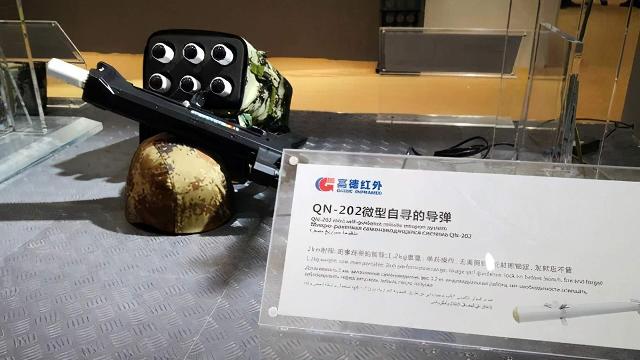New products are available from manufacturers in Russia, China and the USA
The emergence of new types of targets on the battlefield has triggered the evolution of guided missiles. It is logical to shoot down small-sized drones with the same small-sized guided homing ammunition. At the World Defense Show 2024 arms exhibition in Riyadh, China presented the QN-202 compact missile complex. But besides China, work on similar products is underway in other countries. What samples of miniature missiles are being created in Russia and abroad — in the Izvestia material.
Chinese development
The new Chinese battlefield missile system QN-202, which was shown at the World Defense Show 2024, looks quite revolutionary. This is not a premiere, and the system has already been demonstrated before, but this does not make it less significant — missiles are becoming more miniature to counter new flying threats.
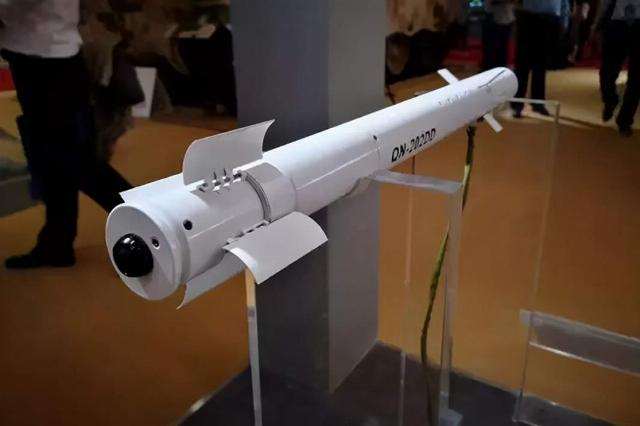
QN-202 missile system
Image source: Photo: Social media
The QN-202 has a diameter of 40 mm, a length of 65 cm and a weight of 1.5 kg. This is several times less than that of any modern ATGM. The compact launcher weighing only 3.5 kg allows any infantryman to use the new complex. The wearable ammunition is six missiles.

The compact launcher can be used by any infantryman
Image source: Photo: Social media
The missile is equipped with a homing head, which implements the principle of "shot — forgot", i.e. it is completely self-guided and does not require illumination of the target by the shooter-operator. Small-sized ammunition has a range of 200 to 2000 m, which allows the complex to be used both in urban and field conditions, on objects both static and moving at speeds up to 61 km/h.

Wearable ammunition — six missiles
Image source: Photo: Social media
The armor penetration of QN-202 is 60 mm of armor. It is unlikely that this will allow you to hit a modern tank, but an armored vehicle or even an armored personnel carrier is quite enough. The complex can also be used against any aerial targets that have a low speed relative to the shooter, such as hovering helicopters and drones of any type. In modern combat conditions, when FPV drones and kamikaze drones are massively used, such a system can give infantry its own air defense, since it is impossible to fire portable air defense systems at small-sized drones, and such a complex is capable of working on drones.
American development
The Chinese were inspired to create small-sized ammunition, probably by American developers, who in 2017 introduced the small-sized guided missile Pike. The new Raytheon product was created in order for the infantry to receive firepower that could be effectively used at ranges from 1 to 2 km, i.e. in conditions when aimed destruction from small arms becomes ineffective, and the use of ATGMs or MANPADS is excessive or impossible.
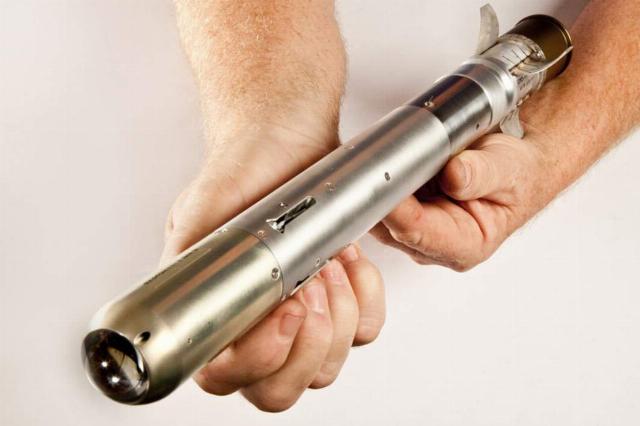
Small-sized guided missile Pike
Image source: Photo: Raytheon
The peculiarity of the Pike is its extremely small dimensions and the possibility of using existing launchers — hand—held and under-barrel grenade launchers. The caliber is 40 mm, the length is 43 cm and the weight is about 800 g. The missile is homing, but aiming at the target is performed by a laser beam, which implies its illumination before being hit.
The dimensions also determine the small mass of the warhead — 270 g, but the radius of the fragments is about 10 m, which allows you to hit targets even with a small miss. This is especially important for use against quadrocopters and other flying objects. As a rule, small aircraft drones are easily hit by fragmentation warheads, and therefore Pike can be effectively used against them.
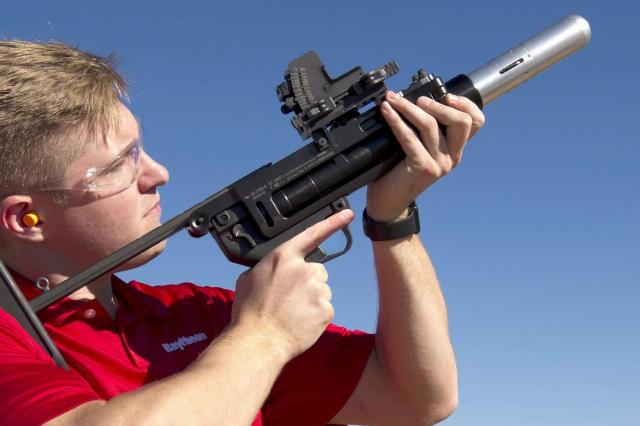
The small-sized Pike guided missile is loaded into the M320 hand grenade launcher
Image source: Photo: Raytheon
There is no information yet on the widespread use of the complex by the US Armed Forces, but it is likely that it is already in service with special operations forces. If we assume that the American military-industrial complex uses the fighting in Ukraine as a testing ground, then the military premiere of Pike missiles may well take place here.
Russian development
The designers of the Russian military-industrial complex foresaw the confrontation with new challenges in the form of kamikaze drones and various small-sized air targets long before their own. Work on the creation of small-caliber anti-aircraft guided missiles for the Pantsir-SM air defense system at the Rostec Corporation High-Precision Complexes holding began in the second half of the 2010s.
The Pantsir-S1 normally carries 12 transport and launch containers with missiles that have a range of 20 km. But using them on short—range small-sized targets turns out to be both wasteful and not always effective - at minimum distances, the missile can miss. A simple and elegant solution was found — to equip the complex with new small-sized ammunition, which uses a control system and a warhead close in capabilities to conventional Pantsir missiles.
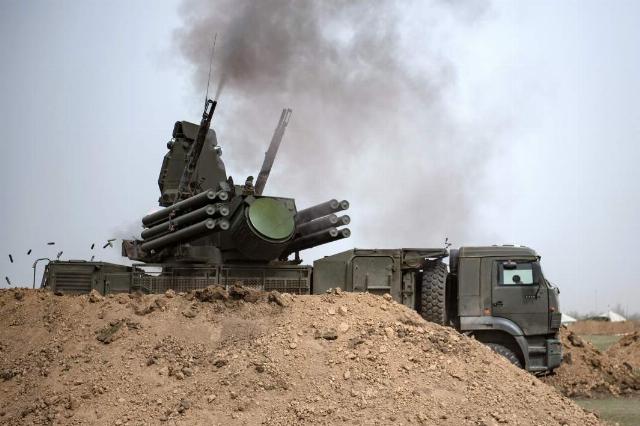
The Pantsir-S1 anti-aircraft missile and cannon complex at the field airfield of the Russian Aerospace Forces in the zone of a special military operation in Ukraine
Image source: Photo: RIA Novosti
The new ammunition will be very effective against drones, and will also be able to be used against ATGMs, MLRS shells, anti-radar missiles and other means of air attack. The minimum area of destruction of air targets by such missiles will be reduced to 500 m.
One standard transport and launch container of such small-caliber missiles, taking into account their dimensions, includes four. Thus, the full ammunition load of the anti—drone installation can be up to 48 missiles - this is a record number. Of course, such installations will carry several types of missiles — both small-sized and standard, since it can never be guaranteed that, apart from kamikaze drones, the enemy will not use traditional types of weapons that require a longer-range and powerful warhead.
In January 2024, the media reported that the tests of small-sized missiles for the Pantsir-SM complexes had reached the final stage. This means that new ammunition will begin to arrive in the area of its own in the near future. Of course, no one will announce the exact plans for such deliveries, but technically it could happen this year.
Dmitry Kornev
